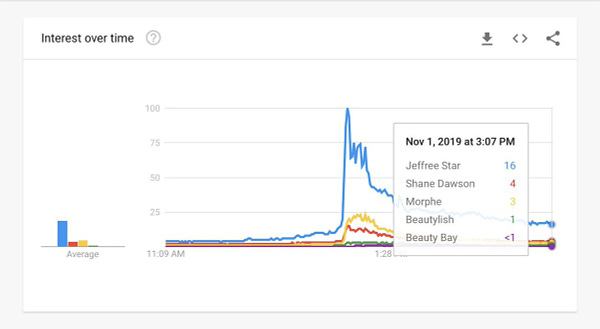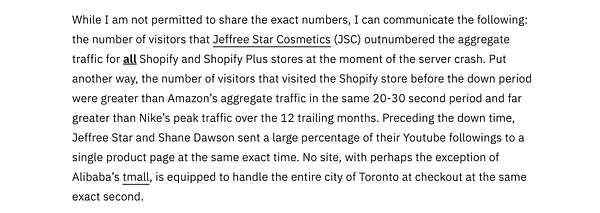Welcome to the Nongaap Newsletter! I’m Mike, an ex-activist investor, who writes about tech, corporate governance, the power & friction of incentives, strategy, board dynamics, and the occasional activist fight.
If you’re reading this but haven’t subscribed, I hope you consider joining me on this journey.
Going to mix things up a bit and share some of my favorite articles and notes about social and consumer trends. Here’s your opportunity to drop some knowledge at Thanksgiving that simultaneously impresses and horrifies your Gen Z family members.
Community Driven Opportunities
I believe many great investment opportunities arise out of community formations so I spend a lot of time paying attention to how communities (both online and offline) connect, communicate, grow, and reinvent themselves.
Here are some of the more interesting articles I’ve collected over the years on consumer, social, and community driven demand.
TLDR Summary
Human behavior is timeless. Consumer apps may change and evolve, but human desire is persistent and universal.
The march towards one-person enterprises continues. With each passing year, tech makes it easy to find and monetize “1,000 true fans”.
Millenials and Gen Z are using Venmo to crowdfund money for everyday usage.
Teens are using fake Instagram accounts (finsta) to relieve pressure of being perfect, and be more authentic with close friends.
Teens are shifting their intimate social media interactions to private/secret group chats (like online private clubs or speakeasy). They're segmenting more. Young people are also very cognizant of their public profiles and the ripple effect "likes" have. This is partly why Zuck is so focused on private communication.
Trends and memes popularized on TikTok, such as VSCO girls, is driving retail sales.
Gen Z is using the TikTok platform to learn, get fashion inspiration, and escape the day-to-day pressures of high school. It is also the home of Gen Z activism even as the platform attempts to curb politics.
Cosmetics guru Jeffree Star broke Shopify (and the cosmetics industry in general) by launching the biggest makeup release in industry history in collaboration with Youtube personality Shane Dawson.
Discord is being used as a social network for many communities.
A Snapchat user’s top friend contributes 25% of Snap send volume in a given week. By 18 friends, each incremental friend contributes less than 1% of total Snap send volume each.
Gen Z purchases collaborations more and are more active in the second-hand luxury market than average.
Everyone shares passwords, but not the subscription bill. I suspect there will be some password sharing of Disney Plus accounts at Thanksgiving today.
Your nephew who’s into Bitcoin probably has Telegram.
Human Behavior is Timeless
No matter how much technology accelerates change, consumers tend to exhibit persistent behaviors around universal human desires. (That’s probably the most Galaxy Brain VC statement you’re going to get from me.)
As Reid Hoffman once said in his 2011 WSJ profile:
Social networks do best when they tap into one of the seven deadly sins.
Facebook is ego. Zynga is sloth [laughter]. LinkedIn is greed. With Facebook, it’s vanity, and how people choose to present themselves to their friends. It’s the feeling of being connected. I like to emphasize the importance of the deep universal, psychological structure in people’s minds. Zynga is about fun. Fun is important. Fun is good. And to have the ability to do something fun for 10 or 15 minutes that’s right at your fingertips and involves your friends, well, that’s better than television in terms of social connectivity. With LinkedIn it’s taking control of your economic destiny and improving how you operate as a professional and how you can develop a competitive advantage. These are fundamentals for having a fulfilling quality of life.
I enjoy reading this profile for 2 reasons:
It highlights the persistent and universal desire to connect, have fun, laugh, experience life, etc.
Since the profile was written in 2011, we get to see first hand the changes and evolution that has occurred over time. The companies that cater to the same desires and needs are much different today!
For those who are interested, I wrote a brief post “7 Deadly Sins Framework” years ago which attempts to clarify and simplify the value proposition consumer technology companies offers its users.
1,000 True Fans
Over 10 years later and the 2008 essay on “1,000 true fans” remains one of my favorites:
To be a successful creator you don’t need millions. You don’t need millions of dollars or millions of customers, millions of clients or millions of fans. To make a living as a craftsperson, photographer, musician, designer, author, animator, app maker, entrepreneur, or inventor you need only thousands of true fans.
And the tools for connecting keep getting better, including the recent innovations in social media. It has never been easier to gather 1,000 true fans around a creator, and never easier to keep them near.
If millennials sought to reshape the workplace in their image, Gen Z seek to avoid the workplace altogether and be a one-person enterprise, leveraging technology to attract and monetize their audience of “true fans”.
Online Patronage
Beyond “true fans”, people are much more comfortable giving money to online strangers.
Millenials and Gen Zers are using Venmo to crowdfund money.
Tweets linking to Venmo and Cash App accounts are common in some pockets of Twitter, as users seek to crowdfund a few hundred dollars.
Users seek to crowdfund a few hundred dollars for rent or food, burdensome expenses such as medical bills, surgery, immigration fees, a family member's funeral, and even a couple dollars for a cup of coffee or a trip to the nail salon.
References to personal payment accounts are common in online communities that coalesce around marginalized groups.
Brands and Businesses are giving away money too with Chipotle giving away $250,000 to roughly 25,000 customers via Venmo to drive customer loyalty.
Speaking of Venmo Patronage:


Instagram
Teens are using fake instagram accounts (finsta) to relieve pressure of being perfect.
Teens increasingly have more than one account. A “Rinsta” (real account) and a “Finsta” (a fake or second account).
The rise of the finstas (or “privates”) began in 2017 when Instagram allowed account switching (unlike FB) with teens embracing numerous “alternate” accounts.
Finstas are often strategically used by teens to relieve this pressure of a perfect public social media presence.
Private, less visible accounts allow teens the opportunity to present “real” personality to a smaller group of closer friends.
The pressure of “likes” and the rise of TikTok is likely contributing to Instagram’s push to hide like counts.
Some are saying Gen Z is killing the influencer.
TikTok
Vine Note: One of the best blog posts I've read to conceptually understand TikTok's opportunity has nothing to do with TikTok. It's actually about Vine and was written over 6 years ago in 2013.
TikTok has turned HS bathrooms into a studio. Bathrooms serve as an escape from the craziness of school, and is a fun, ideal safe place for teens looking for resonant spaces w good acoustics to create TikTok videos.
The platform is becoming a place to learn as teens drive engagement by creating viral theatrical history lessons.
Teachers see TikTok as an educational and recreational opportunity, and are supporting the creation of after-school TikTok clubs, in which kids meet to discuss current trends on the app and make videos themselves.
Gen Z is getting style tips, aesthetic inspiration and beauty tutorials from TikTok. If Instagram provided an early set of standards for millennials, then TikTok is doing the same for Gen Z, just in a much more supportive and interesting way.
The platform is not without controversy.
Trends and memes popularized on TikTok, such as VSCO girls, is driving retail sales. Brand are recognizing the power of TikTok with Elf Cosmetics creating its own song for the platform and generating over 1 billion views.
Software company Bloomreach recently found that a number of products tied to VSCO girls have seen a major jump in sales this year. Three VSCO-girl-favored items — Crocs, Hydro Flask water bottles, and metal straws — have each seen over 200% increases in sales between this October and last October.
Jeffree Star
Oh yes, Jeffree Star gets its own section in this newsletter!
For those out of the loop, Jeffree Star is arguably the biggest makeup personality in the world today and recently released a record-breaking makeup line with Youtube personality Shane Dawson that sold out 1 million units in 30 minutes.
The lead-up to the now sold out Conspiracy collection included a multi-part docuseries which featured a behind-the-scenes look at Jeffree Star’s world and creating the Conspiracy line.
The Beautiful World of Jeffree Star series was brilliant content marketing drawing over 142 million views
Did I mention it was an industry changing event and broke the Internet?


Discord
Discord has its roots in online and social world of video games, but the service has carved out a niche being the chat platform of choice for various online communities.
Users gravitate towards private servers where they can talk to friends instead of public ones.
Users are treating Discord like a social network. 59% users chat while only 41% post on social media.
Chat is joined at the hip with playing video games, 70% chat with friends while gaming (or 80% if you game every day).
Snapchat
SNAP is one of the great comeback stories of 2019, but 2018 was definitely brutal for investors and employees alike culminating with Evan Spiegel writing a 15-page memo laying out lessons and goals.
The memo is worth the read, but a few insights really stuck out to me:
A user’s top friend in a given week contributes 25% of Snap send volume.
By 18 friends, each incremental friend contributes less than 1% of total Snap send volume each.
“We have learned over the past two years that we can grow our user base by providing the fastest way to communicate without providing Stories and other value-add features, but we can't directly grow our community by providing Stories without communication.”
Gen Z Luxury Purchase Trends
Gen Z represents only about 4% of the true-luxury market by 2020 they will drive 8% of true-luxury spend.
Gen Z purchase collaborations more (67% versus the average of 50%) and are more influenced by sustainability and more active in the second-hand luxury market than average.
56% of Gen Z have partially shifted spending from traditional luxury brands to premium, fast-fashion, niche and sports brands, as compared with 52% of Millennials and 46% of true-luxury consumers overall.
Password Sharing
Most Americans share subscription account passwords:
The latest Country Financial Security Index, which surveyed around 1,000 US adults, revealed that over half (54 percent) are using some type of streaming, ride-hailing, home sharing or maintenance service. In addition, more than half (59 percent) take advantage of these services at least once a week, while one quarter (25 percent) use them every single day.
And when it comes to account sharing, television leads the pack, with 74 percent of TV service subscribers sharing their Netflix, Hulu and Amazon accounts with others. Four in ten (42 percent) are sharing mobile plans and 41 percent are sharing shopping accounts like Amazon Prime and Costco.
Few are sharing the bill though:
But while they’re sharing their account info, Americans are not splitting the bill. In fact, more than a third of users who share their accounts aren’t sharing the monthly costs.
Shared passwords is one of the most under-appreciated social networks people don’t talk about. I suspect there will be some password sharing of Disney Plus accounts at Thanksgiving today.
Telegram
The messaging app is popular in crypto:
Encryption and Privacy is a major driver of Telegram adoptions.
Users also like that it's platform agnostic. Public usernames enables users to quickly add each other for direct messaging without needing contact information.





